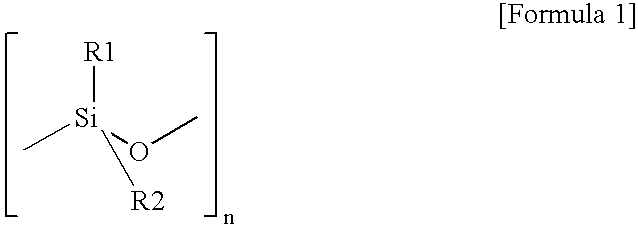Cell culture support and manufacture thereof
a cell culture and support technology, applied in biomass after-treatment, specific use bioreactors/fermenters, biochemistry apparatus and processes, etc., can solve the problems of delayed cell sheet detachment, inability to uniformly adhere or proliferate cells, and inability to uniformly reach confluence on the cell culture support. , to achieve the effect of reducing the time before cell sheet detachment, facilitating cell adhesion and cell proliferation, and reducing the washing time after radiation
- Summary
- Abstract
- Description
- Claims
- Application Information
AI Technical Summary
Benefits of technology
Problems solved by technology
Method used
Image
Examples
example 1
Preparation of Polyisopropylacrylamides Having Various Molecular Weights
[0141]Commercially available polyisopropylacrylamides having the following molecular weights were purchased.
TABLE 1.1Molecular weightManufacturerPart number1 5700POLYMER SOURCE, INC.P3241220000-25000ALDRICH Corporation535311340000 or lessPOLYMER SCIENCE, INC.21458-104258000POLYMER SOURCE, INC.P71425300000SCIENTIFIC POLYMER 963PRODUCTS, INC.
Preparation of Redox-Synthesized Polyisopropylacrylamide
[0142]17.8 g of N-isopropylacrylamide and 150 mL of purified water were charged in a 500 mL separable flask, to form a solution / dispersion under stirring. Under a nitrogen gas stream, 0.24 g of ammonium persulfate and 0.30 mL of N,N,N′,N′-tetramethylethylenediamine were added at room temperature to initiate polymerization. After completion of polymerization, the mixture was heated to take out the gel, and the gel was dried in an electric drying apparatus at 100° C. The dried gel was ground and subjected to GPC analysis in...
example 2
Test Example 2.1
[0156]Tests were conducted for 2 kinds of prepolymers of temperature responsive polymers.
[0157]Polyisopropylacrylamide having a molecular weight in the range of 20000 to 25000 which was commercially available from Sigma-Aldrich Co., Ltd (ALDRICH Corporation, Part Number 535311) was used as Prepolymer 1 for the following experiments.
[0158]Polyisopropylacrylamide obtained by performing a redox synthesis according to the following procedure was used as Prepolymer 2 for the following experiments. 17.8 g of N-isopropylacrylamide and 150 mL of purified water were charged in a 500 mL separable flask to form a solution / dispersion under stirring. Under a nitrogen gas stream, 0.24 g of ammonium persulfate and 0.30 mL of N,N,N′,N′-tetramethylethylenediamine were added at room temperature to initiate polymerization. After completion of polymerization, the mixture was heated to take out the gel, and the gel was dried in an electric drying apparatus at 100° C. to give Prepolymer 2...
PUM
| Property | Measurement | Unit |
|---|---|---|
| width | aaaaa | aaaaa |
| boiling temperature | aaaaa | aaaaa |
| thickness | aaaaa | aaaaa |
Abstract
Description
Claims
Application Information
 Login to View More
Login to View More - R&D
- Intellectual Property
- Life Sciences
- Materials
- Tech Scout
- Unparalleled Data Quality
- Higher Quality Content
- 60% Fewer Hallucinations
Browse by: Latest US Patents, China's latest patents, Technical Efficacy Thesaurus, Application Domain, Technology Topic, Popular Technical Reports.
© 2025 PatSnap. All rights reserved.Legal|Privacy policy|Modern Slavery Act Transparency Statement|Sitemap|About US| Contact US: help@patsnap.com

